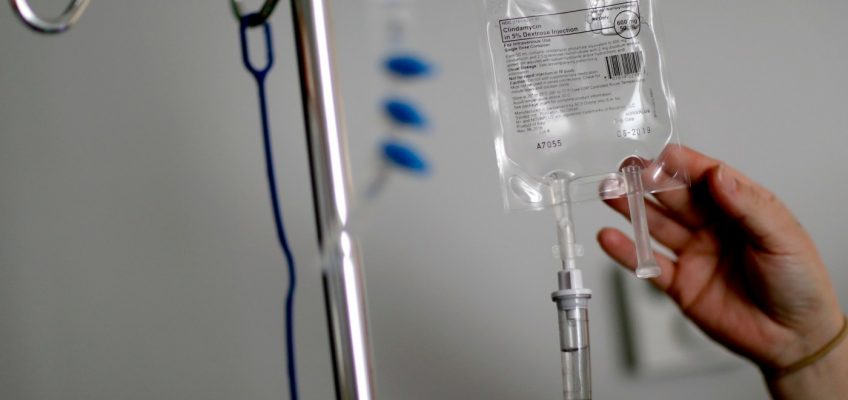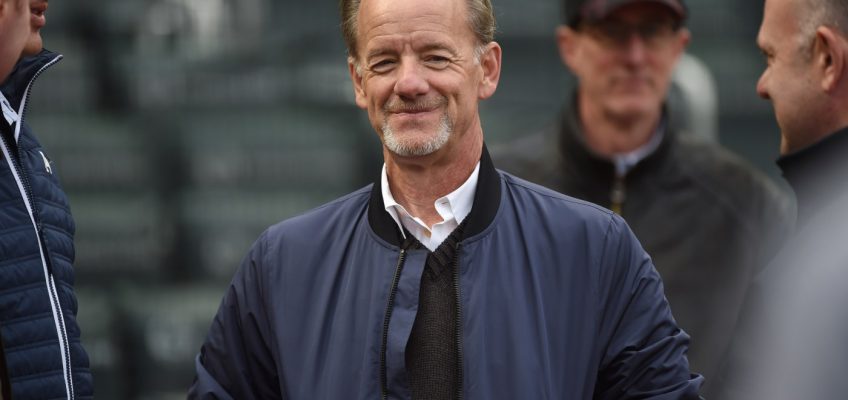The way it looks now, the Pohlad family will end up retaining ownership of the Minnesota Twins or selling at a price lower than initially anticipated.
It’s been nearly eight months since the Twins announced they would explore a sale of the club after 40 years of ownership. Some in the organization privately speculated a sale could bring at least $1.7 billion, the price for which the Baltimore Orioles sold last year.
The Twins figured then that a sale could be completed by March. At least one potential local buyer, after recently reviewing the club’s financial records, has lost interest based on the price, now believed to be $1.5 billion. The Twins reportedly are more than $400 million in debt, borrowing to pay bills.
Another potential local buyer has confided he’s not currently interested.
Still another, after reviewing the books, described prospects for a sale as “dismal.”
>> The major obstacle for a sale of the Twins is cash flow. A majority buyer would need myriad limited investors to cash-flow the operation, which could cost at least $25 million a year.
>> A major reason for the Twins’ recent financial losses is local TV deals. That eventually will improve, though. Meanwhile, other major league owners would frown on the Pohlads taking a lesser price because it could diminish the value of their franchises.
Also, after the 2026 season, complicated negotiations for a new labor agreement could lead to a work stoppage.
>> New York-based Allen & Company, hired by the Twins to explore a sale, also is exploring investment deals for the NBA’s Portland Trail Blazers and the WNBA’s Connecticut Sun and New York Liberty.
>> Stationed just outside Target Field during Twins games are police armed with AR-15 rifles. Said one, “I hope I never have to use it.”
>> Lance Johnson coached Chet Holmgren, the 7-foot-1 Oklahoma City Thunder star, at Minnehaha Academy.
“What’s fun for me is that most everybody has seen him from his days at Gonzaga through now,” Johnson said Friday. “I’ve seen him from seventh grade through now, so it’s literally been the development from a boy to a man, and it’s made me very proud of him.”
Eight years ago, when Minnehaha Academy was partially destroyed due to a natural gas explosion, Holmgren had to re-route from home in Minneapolis and travel nearly an hour each day to get to another campus for classes.
“He had to take the city bus to a Burger King behind my house, and then from Burger King, I would drive him the rest of the way,” Johnson said. “The type of kid he was, he never once was late. He made friends with all the Burger King people. They loved him, gave him free food all the time. He was just a wonderful kid.”
>> After two years of litigation following dismissal for non-compliance over the NBA’s COVID-19 policy, St. Paul’s Ken Mauer, Jr., 70, who refereed nearly 20 NBA Finals, has won his pension appeal.
>> The Vikings will play the Steelers in Ireland on Sept. 28, but not because of deference to the Vikings. The game at Croke Park in Dublin is for the Rooney family, owners of the Steelers. Dan Rooney was U.S. ambassador to Ireland under President Obama.
It was the Steelers who sought a game in Ireland, and it just happened that the Vikings were chosen. Then the Vikings, who already have played four regular-season games in London, agreed to stay another week and play the Browns in London at Tottenham Stadium.
>> In 2019, Rocco Baldelli, at age 38, became the youngest winner of the American League Manager of the Year Award. The Twins — who won 101 games in 2019 — after a 13-20 start to this season, won 13 straight, and 15 of their next 17, to propel them to second in the AL Central.
Entering Saturday, only the Phillies (16-5) in Major League Baseball had more victories in May than the Twins (15-4).
As a player, Baldelli had three managers: Lou Piniella, Joe Maddon and Terry Francona.
“They brought very different things to the table. And man, I was lucky,” Baldelli said. “Lou was tough. Joe was incredibly creative and charismatic. And anyone who plays for Tito (Francona) finds a new appreciation for the game.
“All three of them might go to the Hall of Fame. Those are some good guys to learn from. And I got to work on Kevin Cash’s staff in Tampa when he took over and became a young major league manager.
“These were all essential for me, all in their own way mentors, and probably turned me into the baseball person that I am.”
>> The Lynx won’t host Caitlin Clark and the Indiana Fever until Aug. 24 at Target Center, but already the cheapest ticket is $167 via Ticketmaster.com. Most expensive: $3,176.
>> Former Gophers and Cretin-Derham Hall football player Casey O’Brien, 26, who has undergone more than 40 cancer surgeries, received a standing ovation after his emotional induction speech into the Mancini’s St. Paul Sports Hall of Fame the other day.
>> Former USA Olympic hockey gold medal star Jenny Potter’s son Cullen, 18, an Arizona State center from Minneapolis, is projected as a late first-round pick in next month’s NHL draft.
>> Minnesota Twins starter Pablo Lopez’s first full healthy season in the major leagues was 2022 with the Miami Marlins. He was pitching well and working hard in weight and training rooms. He finished the season 10-10.
But, he figured, “there must be something else I can do. Lo and behold, the season’s over and I’m weighting 242 pounds! The heaviest I’ve ever been,” he said.
Lopez, 29, is 6-foot-4.
“It wasn’t a huge 242 pounds. But I was a little fluffy here and there,” he said.
Then he began chatting with the Marlins’ team dietitian.
“I’m like, this is one gap I can shrink to elevate my game to get better. I started diving into diet and nutrition and made a lot of changes that offseason going into 2023,” he said.
He showed up to his first spring training with the Twins at 215 pounds.
“Down 27 pounds,” he said.
Lopez (4-2, 2.31 ERA) is in terrific physical condition. He used to enjoy cheeseburgers.
“Oh, yeah — just give me two cheeseburgers — I could eat so many,” he said. “Have you ever been to Shake Shack? Oh my God, I could eat six of them.
“I don’t, but I could.”
Now he’s learned the value of nutrition. “And what it brings to my life and career,” he said.
It’s brought him a $73.5 million, four-year contract. He’s gone from a size 38 waist to size 32.
Ever eat a doughnut, a candy bar?
“No doughnuts, no candy bars,” he said.
>> Twins reliever Louie Varland’s wife Maddie, an Irondale High School grad, is a dentist practicing in Brainerd. “She comes down (Twin Cities) here on weekends and on off-days I go up there — we make it work,” said Varland, playing for $768,150 this season.
>> Miles Bollinger, who was captain of his football, basketball and golf teams at Cretin-Derham Hall, is headed to Indian Hills (Iowa) Community College to play golf. Miles, son of ex-Vikings QB Brooks Bollinger, never received an academic grade other than A during his prep career.
>> Star quarterback for the Centennial girls flag football team is senior Allenah Loots, daughter of former record-setting Southwest State QB Jeff Loots.
>> Iconic local sports vendor Wally “The Beer Man” McNeil has turned 90 and plans to work the Vikings’ summer golf tournament next month at the Meadows at Mystic Lake.
>> As he recently announced, Warren Buffett, considered by many the greatest U.S financial investor in history, with an estimated net worth of $160 billion, is retiring this year at age 94. St. Paul Johnson grad/former Gophers hockey captain Ron Peltier worked for Buffett’s Berkshire Hathaway company, having founded mortgage affiliate HomeServices of America, a national real estate firm.
Peltier, 76, worked for Buffett for more than 20 years.
“Absolutely great guy,” he said. “The things he expected were total honestly and integrity. He’s famous for saying, ‘Lose money for the enterprise and I’ll understand. Lose an ounce of reputation and I’ll be ruthless.’ And that’s still how he thinks. You can’t tarnish reputation, which is probably good advice for all us.”
What’s made Buffett an investment genius?
“First of all, he uses common sense,” Peltier said. “You want to surround yourself with the best people. But no compromising on honesty and integrity.”
Peltier retired two years ago and resides in Dellwood, Minn., where he owns 7 Vines Vineyard.
>> Eight players on Cretin-Derham Hall’s baseball team are committed to college programs next year, including infielder-pitcher Davis Fleming to the Gophers.
>> Among Twins starter Chris Paddack’s array of body tattoos is “236” inscribed on his ribs.
“The (overall) number I was drafted — round eight,” said Paddack, who starts Monday in Tampa Bay. “Just a reminder that I’m living out my dreams.”
Paddack, 29, was drafted in 2015 by the Miami Marlins. Other tattoos include roses as a reminder of his grandmother, who died of breast cancer last February; a lion with blue eyes, which he calls his animal of choice because he’s a proud Texan, and Joshua 1:19, his favorite bible verse.
“They’re all meaningful to me,” he said. “I want to finish (tattoo) out my left arm, but I haven’t rushed it because I want it to be something that means something to me or my family. So that way, whenever your kids ask, you have a reasoning behind it, and it’s not just a couple butterflies.”
Paddack, pitching for $7.5 million this season, is 2-4 with a 3.98 ERA after 10 starts. He can become a free agent after the season.
>> Gophers junior golfer Isabella McCauley has been named a member of the U.S. Palmer Cup team featuring men’s and women’s college golfers who will compete internationally June 5-7 at the Congaree club in Ridgeland, S.C.
>> Unless he gets another pay raise, the Gophers’ P.J. Fleck, at $6.8 million, this year will be the ninth-highest paid football coach in the 18-team Big Ten, per on3.com.
>> Former Gophers head football coach John Gutekunst, 81, is retired in Myrtle Beach, S.C. With the Gophers, he was paid $100,000.
>> Jose Valdivielso, a Cuban infielder for the original Twins in 1961, died recently at age 90. Al Worthington, a reliever, is the oldest living former Twin at age 96.
>> The Saint Paul Saints lead all of Minor League Baseball in rainouts this season with 13.
>> Former Richfield basketball star Jessica January is taking an assistant coaching job at alma mater DePaul University.
>> Monroe High Hall of Fame electees for June 22 induction at DeGidio’s: John Moravec, Dick Rudolph, Joe Corbo, Gordy Morrison, Paul and Jim Fearing.
Don’t print that
>> The Vikings so far this year are No. 1 in the NFL in cash spent on players, $362.3 million, per spotrac.com. The Packers at $259.5 million, are No. 27 in the 32-team league. Last season, the Vikings ranked 18th at $228.4 million, the Packers 19th at $234 million.
>> The 2025 NFL draft and free agency have been completed and Vikings GM Kwesi Adofo-Mensah, who has one season left on his initial four-year contract, remains without an extension even though Vikings ownership has said it will get done.
>> TV viewership of the Timberwolves-Oklahoma City Game 1 of the Western Conference finals last week was down 24% from the Wolves-Mavericks Game 1 playoff a year ago, per sportsmediawatch.com
>> So much of the coming Vikings season will depend on how rookie QB J.J. McCarthy plays. At this juncture, a 10-7 regular season record isn’t unreasonable.
>> The NBA is expected to wait until soon after the NBA Finals to announce that Alex Rodriguez and Marc Lore are officially new owners of the Timberwolves and Lynx. Meanwhile, a second source has confirmed that Rodriguez and Lore did not have the $1.5 billion purchase price and needed mega-billionaires Michael Bloomberg and Eric Schmidt to step in to fortify.
>> A little birdie says a Gophers men’s sophomore basketball starting guard will play this year with a $700,000 name, image and likeness (NIL) deal.
>> If Gophers football sophomore defensive back Koi Perich, paid $250,000 via NIL last season, makes less than $1 million, he’s being underpaid.
>> Sophomore offensive line starter Phillip Daniels, who is 6-foot-5 and 315-pounds, has left the Gophers and is joining a reigning national championship Ohio State team that had a NIL player payroll of $20 million last season. Minnesota plays in Columbus on Oct. 4.
>> Don’t think there won’t be major competition among Minnesota casino tribes for more sports gambling rights when it’s officially announced that Grand Casino in Mille Lacs will succeed Xcel Energy Center as corporate naming sponsor for the Wild’s St. Paul arena.
>> A sports memorabilia collector the other day was able to get new Pope Leo XIV, an American baseball fan from Chicago, to sign a baseball.
Leo XIV is expected to be asked a lot to autograph baseballs. In 1987, former Gophers catcher Mike Sadek from Richfield, while working for the Giants, was able to get a baseball signed by Pope John Paul II during a papal appearance at Candlestick Park in San Francisco. The Pope signed it “JPII.” It brought $34,000 in an auction.
>> Now word is it’ll take $17 million a season if Kirill Kaprizov’s representation squeezes the Wild to re-sign its star in July.
>> Wild first-round draft pick forward Danila Yurov from Russia will play for the entry-level $950,000 when he gets to the NHL.
>> Plans are underway for a huge retirement party in Montreal in August for Marc-Andre Fleury and teammates from his 21-year career, which ended with the Wild this season.
Overheard
> The Twins’ Rocco Baldelli, the 2019 AL Manager of the Year: “I could be wrong about this, but over seven years there’s only one guy in this clubhouse who was here in 2019, Byron (Buxton). It’s basically Byron and a different group. When it gets down to it, you’re going to have to win in a completely different manner.”
Charley Walters: Vikings all in on J.J. McCarthy as starting quarterback
Charley Walters: Vikings’ backup definitely won’t be Rodgers
Charley Walters: Sam Darnold likely to land in Seattle




